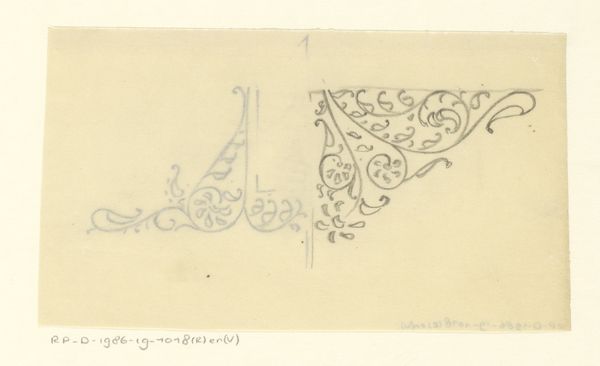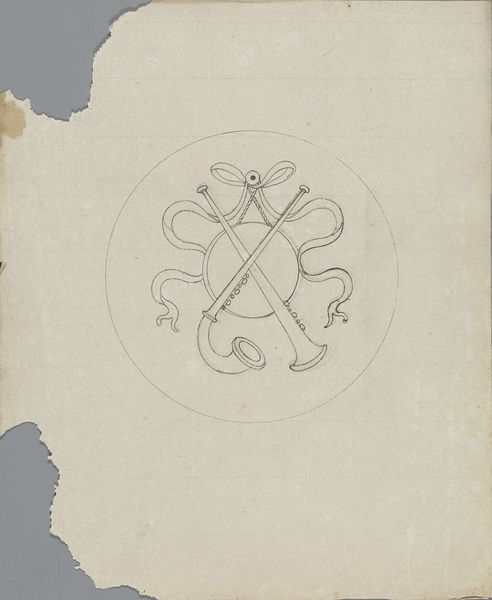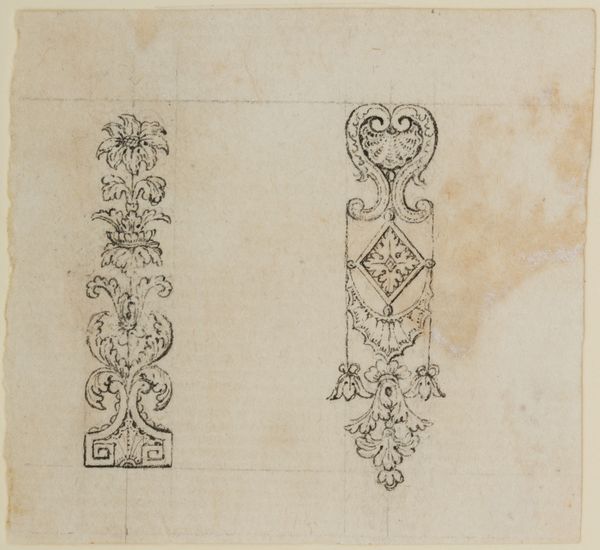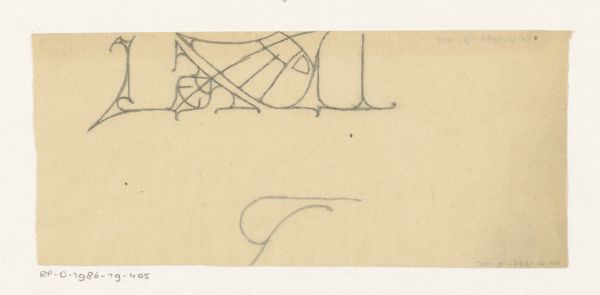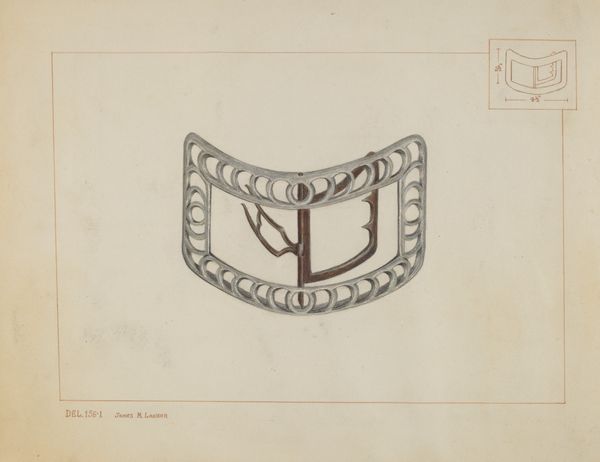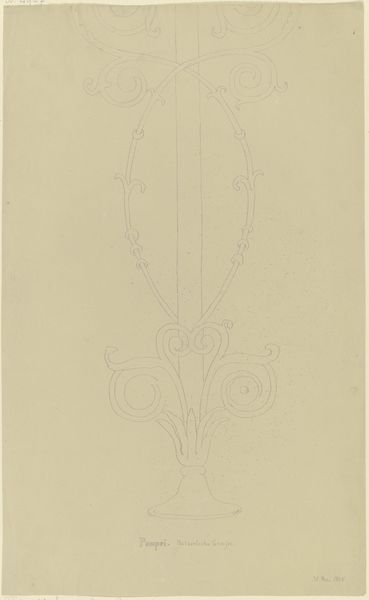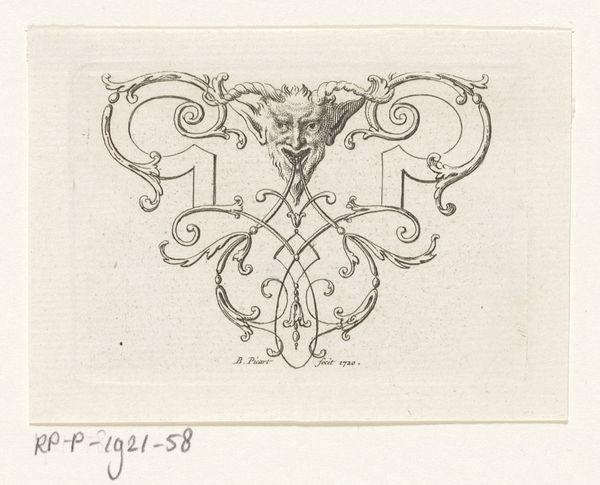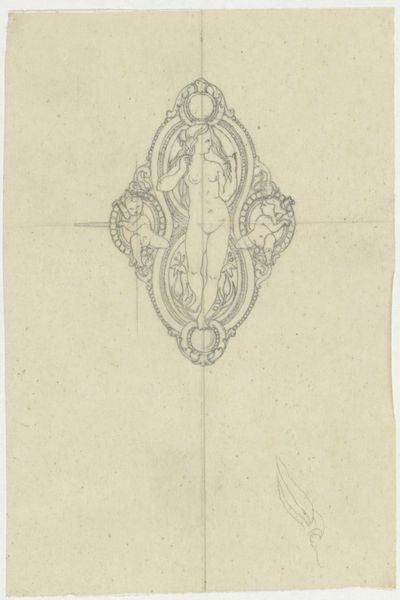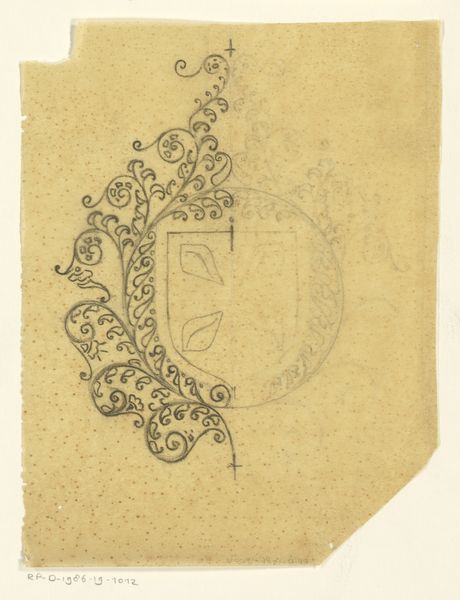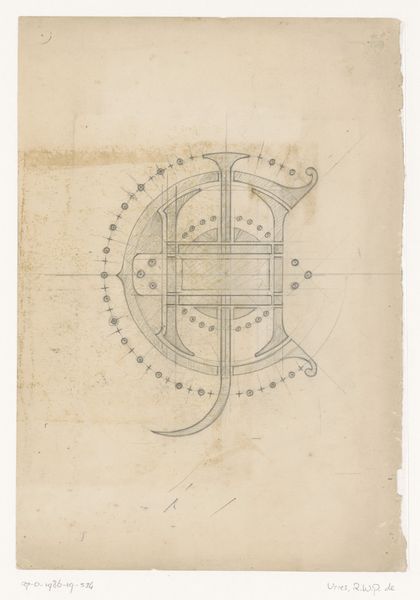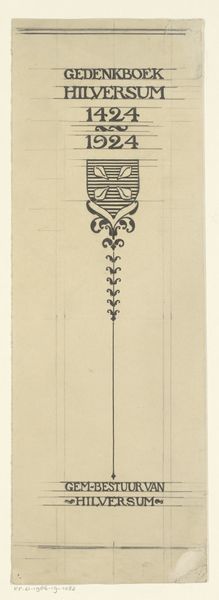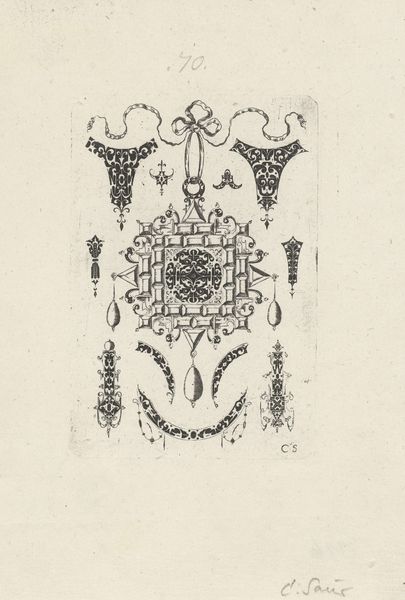
Ontwerp voor een monogram voor de Vakschool voor de Typografie 1884 - 1952
0:00
0:00
drawing, graphic-art, paper, typography, ink
#
drawing
#
graphic-art
#
art-nouveau
#
blue ink drawing
#
paper
#
typography
#
ink
#
sketchbook drawing
Dimensions: height 96 mm, width 109 mm
Copyright: Rijks Museum: Open Domain
Editor: We're looking at "Ontwerp voor een monogram voor de Vakschool voor de Typografie," a design for a monogram, dating from 1884-1952, by Reinier Willem Petrus de Vries. It's done in ink on paper and showcases typography, with clear Art Nouveau influence. I am struck by how it blends function and artistic flair, a true emblem. What social factors might have influenced this piece? Curator: That's a good start. Consider that the late 19th and early 20th centuries witnessed a surge in vocational schools, reflecting the needs of industrial society. This monogram isn't just decorative; it's designed for a school dedicated to typography. How does that change your view? It implies a conscious effort to legitimize typography as a specialized field of knowledge. Editor: So, this artwork is, in itself, making a case for typography's value! It's not just art for art's sake but art with an institutional agenda. Would this kind of emblem have been intended for wide circulation or more for internal use? Curator: Probably both. Emblems like these reinforced institutional identity within the school. Consider that a well-designed monogram would feature on official documents, letterheads, and potentially even signage, giving a public face to the school. Its design would inevitably convey the institution's ethos and ambitions. Think about the role that branding and visual identity play in today's world; that impulse isn't new! Editor: I see. It served both a functional and representational role. So understanding the rise of vocational schools helps understand the social function of this art. Curator: Exactly. We shouldn't view art in a vacuum. Museums often emphasize aesthetic qualities but context and use matter, especially with graphic arts! What’s your take away? Editor: That examining the cultural and educational landscape behind a piece, gives insight on meaning beyond just appearance. Thank you for sharing. Curator: Likewise. Considering that institutions shape both the production and reception of artwork is the heart of being an Historian!
Comments
No comments
Be the first to comment and join the conversation on the ultimate creative platform.
